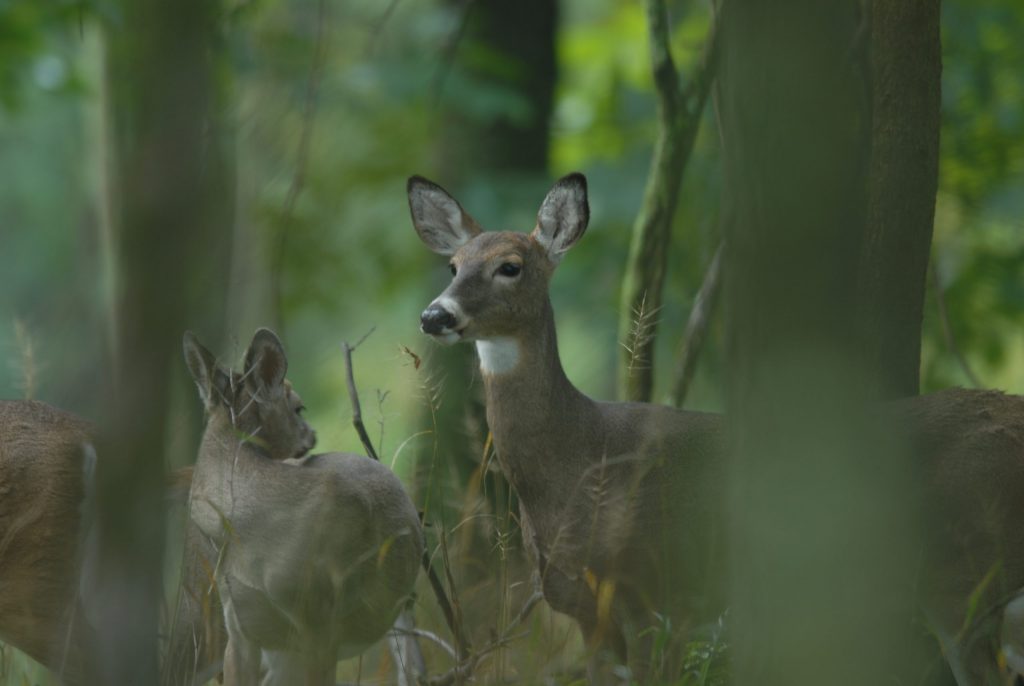The world of nature holds many wonders and mysteries. Part of conducting research is to try to explain some of the mystery. While chasing the mystery as a Ph.D. student, I regularly observed an old Doe. Collared for a previous project, she was 12 years old by the time I came around. I watched her all summer. She appeared healthy but she was always alone – no evidence whatsoever that she had a fawn.
As a graduate student, seasons are not marked by the changing of the weather but the activity it represents. Observation season turned to hunting season then trapping season. One evening as I patiently waited for deer to come to the drop net, an old and familiar lady came strolling by accompanied by a fawn!
There was no way that it could be HER fawn. Ever since that observation I have always been skeptical of the assumption that a doe and fawn captured together were related.
Fast forward 10 years and to research here in Pennsylvania studying male dispersal. There is a theory that orphaned young males are less likely to disperse because they no longer have a mother to drive them away from their birthplace.
If we captured a doe and button buck, we would know this buck was not orphaned. Then we could test the hypothesis: are non-orphaned males more likely to disperse?
But that little voice in my head reminded me of that old Doe with a fawn that was not hers. Perhaps the first question we should ask is whether does and fawns traveling together are related.
Using the marvels of modern technology, we took tissue samples from does and fawns captured together during the 2003 trapping season and conducted a genetic analysis to determine if they were, in fact, related. (The results of which are published in the Journal of Wildlife Management).
Was the mystery solved? Well, sort of. It turns out you might as well flip a coin to determine if a fawn is related to the adult doe you see nearby – at best, 51% of fawns were related to the adult doe in the capture group!
Do these findings have anything to do with deer watching? Well, if someone tells you they saw a doe with triplets… maybe they did and maybe they didn’t. First, mortality rates of fawns are sufficiently high that the odds of all 3 fawns surviving to the age they travel with their mother are not good. Second, our research shows fawns don’t always travel with their mother!
Here’s the practical application: if you are managing an area and want to monitor recruitment of fawns into the population, you should look at the ratio of fawns to does – sum up all the fawns you see and divide by the total number of adult does you observe. Don’t hang your hat on observations of how many does you see with or without fawns.
As fawns become more independent they don’t spend all of their time with their own mother. Hanging with Aunt Suzie is just as likely as tagging along with mom.
But there are still mysteries to be solved. Like exactly when do fawns start traveling with other does? This spring we may get a bit closer to answering that question as new technology will allow us to monitor how much time mothers and their offspring spend together.
With deer, family isn’t necessarily the tie that binds.
-Chris Rosenberry, Supervisor
PGC Deer and Elk Section
If you would like to receive email alerts of new blog posts, subscribe here.
And Follow us on Twitter @WTDresearch
